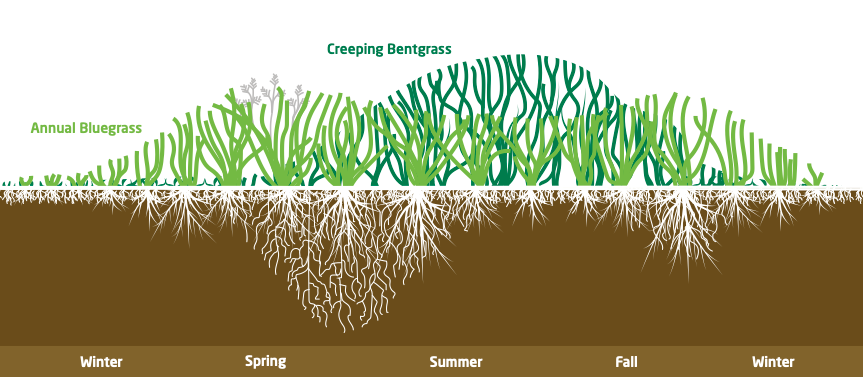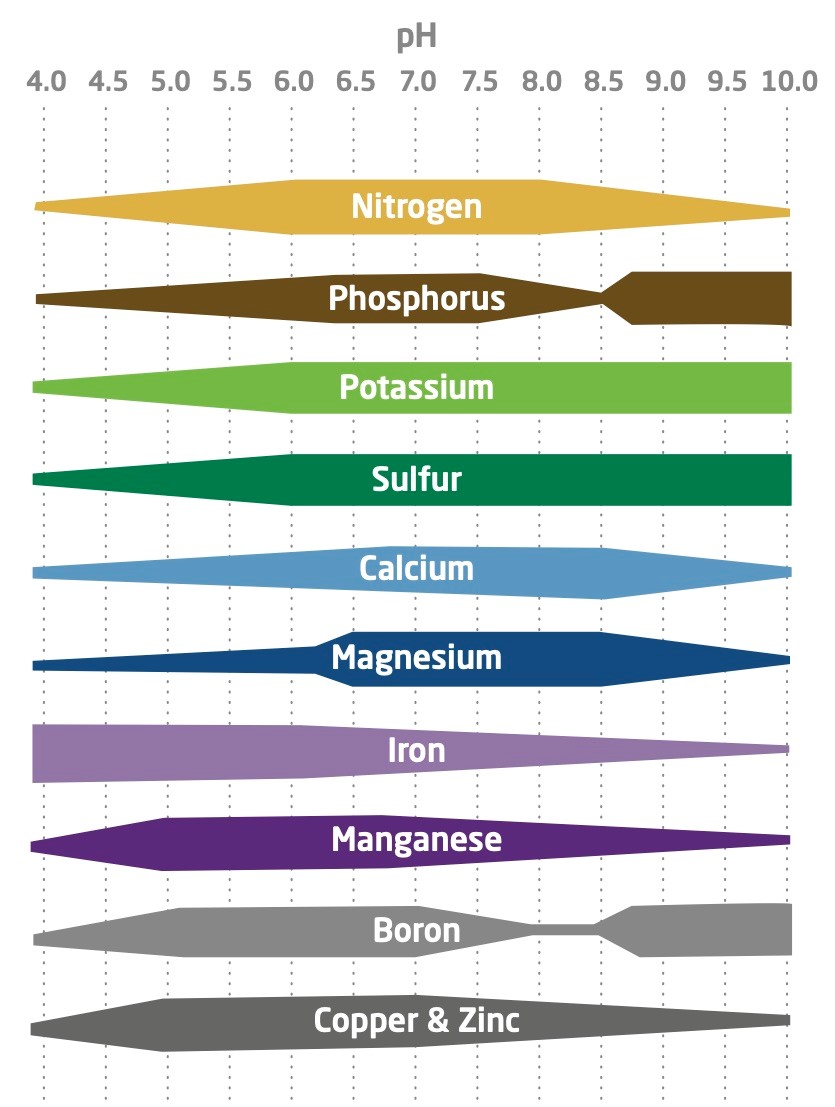Determining Nutrition Demands for Turfgrasses
March 13, 2020
The dynamics of turf species, soil type, maintenance intensity and climate determine nutrient demands. Golf course superintendents strive to maximize uptake efficiency and limit losses to the environment to promote plant vigor. The timing and method of application for these nutrient inputs also play a critical role to maximize color, quality, performance and playability. Before applying nutrients to turfgrass, always calibrate equipment to most effectively deliver the opium dose of nutrient per unit area. This will ensure nutrient demands are met without risk of luxury consumption.

Turfgrass Species and Growth Potential
The first step to determine nutrient demand is to consider a seasonal growth chart for the species being managed. As a general rule, nutrient demand will be higher during times of the year favorable for growth. For example, warm-season species require more nutrient inputs June-August, while cool-season turfgrasses generally will need more inputs spring and fall of the year.
Figure 1 illustrates how two different cool season species may differ in their nutrient requirements based on their natural shoot and root growth patterns – this is particularly important when nutrients are soil applied.
The seasonal growth chart information represents the growth potential and offers an estimate of nitrogen demand. Growth potential relies primarily on optimum temperatures data, however light intensity and soil temperature will also have an impact. Side note: One strategy to overcome seasonal limitations of growth, particularly rooting, is the use of foliar nutrient applications for example BRANDT® Manni-Plex® and GRIGG® Proven Foliar® technologies.
Nitrogen (N) Demand
Turfgrasses require more N than any other nutrient therefore consumption of other nutrient and future inputs will be determined, in part, by the amount of N applied annually. The more growth, the greater other essential nutrient requirements, including minors, for structural integrity and functioning.
- Source and dose: Slow release N sources can provide an efficient feeding program for higher application doses. Liquid and foliar sources are best to apply low doses of N. Research has shown that frequent, low dose applications of N will produce the best quality turfgrass long term with better control over unwanted shoot growth, which may limit playability.
Growth Rate
But knowing the growth potential, in theory, and planning N dose and timing framework around it may not be enough. Understanding the actual growth rate will require an additional step. In fact, measuring shoot growth is the most accurate way to determine the growth rate and is determined by growth potential (temperature), light intensity/duration, and water/nutrient availability.
More growth means:
- Greater nutrient demand - if turfgrass plants consume nutrients from the soil, they must be replaced by fertilizer (soil test report)
- More frequent mowing required
- Decreased plant growth regulator (PGR) activity
- Better recovery
- Corresponding root growth
Recently, measuring the growth volume has been presented as a relatively easy way to collect clippings and convert them into an important predictive set data, particularly when done routinely. Measuring clipping volume rather than measuring by weight eliminates error from sand or other particulate. You can find a resource for on the theory and practical aspects here. (One Bucket at a Time, M. Woods, published online Dec. 2018)
Most recently, these concepts have been articulated by Dr. Micah Woods, chief scientist at Asian Turfgrass Centre, as a supplement to the minimum level of sustainable nutrition (MLSN) guidelines and best practice developed in collaboration with PACE Turf. Information on the guidelines and additional references can be found here. This approach has been adopted by many turfgrass managers, with good success. Bottom line: Apply higher doses of N during times of greater turfgrass growth potential and fine tune fertilizer programs by determining the effect of nutrient and PGR inputs on turfgrass growth rate. This approach, when used in combination with highly efficient fertilizer sources, will maximize plant use, limit loss to the environment and avoid luxury consumption.
Other Considerations
Soil pH
Soil pH has big impact on the solubility of essential plant nutrients. Figure 2 shows solubility of nutrients based on soil pH and potential for interaction resulting in the formation of a stored nutrient form.
For example, phosphorus (P) decreases in availability at pH 7.5 ® 8.5. In addition, Mg becomes less soluble at pH < 6.5. The optimum range of soil pH for turfgrass is 6.3 ® 6.8. A slightly acidic rhizosphere encourages optimum microbial activity, which is also important for nutrient cycling and availability.
Plant Disease Interactions
Nitrogen and other nutrients often impact the extent of turfgrass disease. Use history as a guide and plan accordingly as one component to an integrated pest management program.
Establishment
Plants require a different profile of nutrients during the establishment process to encourage root growth, and tillering. Consider N fertilizers with additional phosphorus (P), magnesium (Mg) and minor nutrients for optimum photosynthetic function of younger plant tissue with less leaf surface area.

